Marking The Hours With Antoine Pin, Managing Director of Bulgari Watches On The Octo Finissimo Evolution & More!
Just when we thought no new records could be broken in the watch industry, Bulgari decided to take the plunge and release its new record-breaking Octo Finissimo’s this year! Through its unique octagonal case design recalling the geometries of ancient Roman architecture, the line evokes an intangible air of timeless Italian classicism reinterpreted in modernity's most rarefied watchmaking language.
We caught up with Antoine Pin, Managing Director of Bulgari Watches to discuss the evolution of the Octo Finissimo and more!
THM: From an Indian perspective, the hand-sketched Octo Finissimo has garnered alot of interest. Tell us a little about the evolution of the Octo, since the past 10 years.
Antoine: The next 10 years is going to be transformative. Let's start with the past. There was a before and after for us as a watch manufacturer with Octo, not necessarily as a brand since we've been selling watches for 100 years.
But it's interesting - like the story of humanity on planet Earth giving up hundreds of years, and in the last 10 years, such acceleration. Clearly, Octo, and particularly Octo Finissimo, is one of the key accelerating factors. It's a key factor in our watchmaking history. There was the first phase with the Octo Original connecting to Roman architecture and our roots. Any successful collection today has a very strong bond to our identity as a Roman brand. We launched Octo Original in Rome. The second step, the fact of maturity, is Octo Finissimo 10 years ago. Why this? For the first time, we had a product fully integrating our conception as a watchmaker - a maison producing its own cases, bracelets, and movements. Having control over every part allows a holistic design approach and thinking differently.
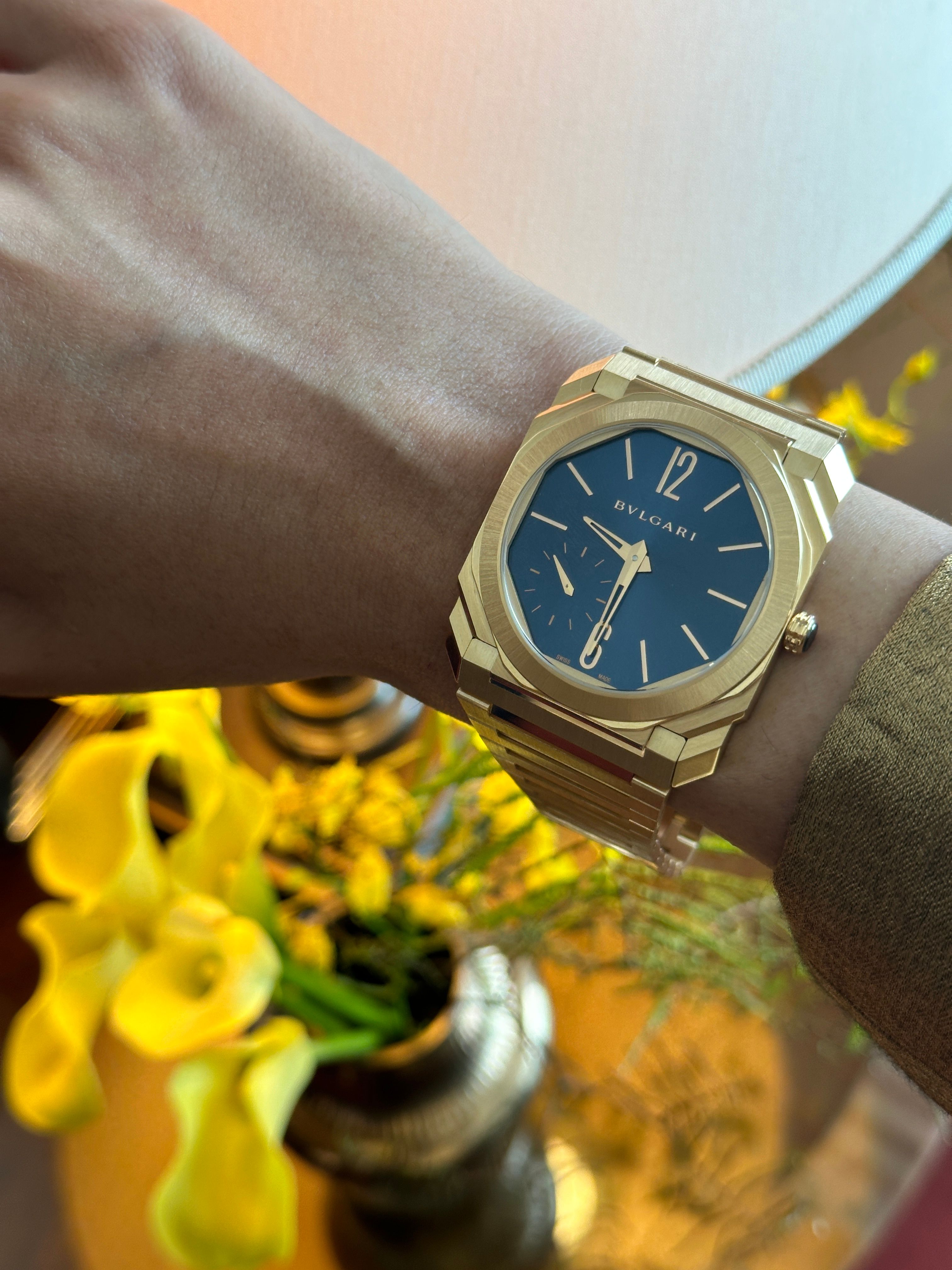
THM: The question is the chicken and egg - did the perspective on the caliber lead to the design or vice versa?
Antoine: The reality is, our identity as a watchmaker means they go together. This co-substantiality highlights our difference, our capacity to think design and function together from our watchmaking professional background. In Italy, nothing cannot be beautiful. Beauty is the essence of what is just - a philosophical element from Roman and Greek times. Beautiful is what is equitable, balanced. There is an intellectual perspective on beauty translating to "bello and ben fatto" - if produced properly, it will be beautiful. This notion of aesthetics and beauty is so important that we are the only maison with a creative director, a role thinking both aesthetically and from a movement perspective. Our creative director Fabrizio is engaged in all product development meetings.
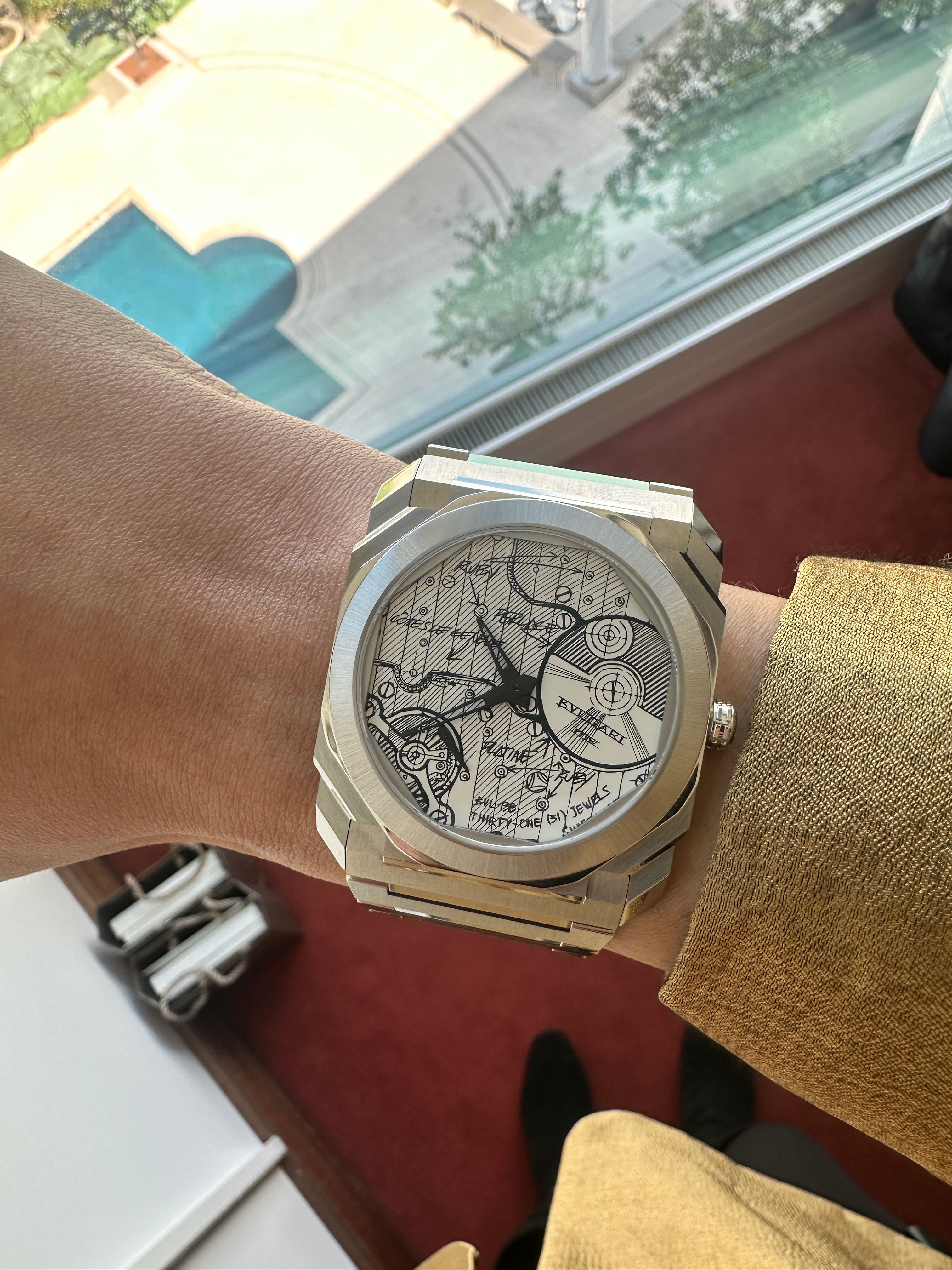
The story of Octo Finissimo highlights this, like the perpetual calendar with no moon phase but a large retrograde hand - not the Swiss vision but designed for what the customer sees. Or the Ultra, initially a 10-handed sketch by watchmakers that evolved through discussion into the 1.8mm regulator style respecting watchmaking culture. This sums up how we work - like Renaissance artisans creating beauty but functional too, one not coming without the other. That's what we do with Octo Finissimo - beautiful and Fabrizio is an absolute genius, but it's interesting.
THM: How involved do you usually get when it comes to the product?
Antoine: The history of Bulgari today is teamwork- a contribution and collective intelligence. I have huge admiration for independent genius brand leaders like Max Busser. They are cool because they are creative directors and watchmakers. But at Bulgari, creativity doesn't come from one person - there is no one-man show. It's a team working together.
If I'm not here tomorrow, it will continue because we are building a culture, a philosophy. If Fabrizio wasn't here, of course things would be different as you can't easily replace someone like him. But the spirit would remain, as would most of the team. The brand will survive us, as it has survived four generations of the family. We need to work towards that. Collective intelligence brings two things. When we discuss as a team, we avoid 90% of the mistakes we would make individually. And since we're not stupid, if we make 20% mistakes alone, together it may be only 3-4% out of 200 decisions - thanks to that additional 90% process of listening to each other. This can work without me, as someone else will bring that perspective.
THM: Talking about Max Busser and your collaboration, it’s rare to see a premier brand of a large group to collaborate with an independent watchmaker. Do we see more of these collaborations for Bulgari?
Antoine: We collaborate a lot with artists because we love creativity, art, and people who bring something special. Fabrizio, Julien and I interestingly have no misplaced pride. If you look at our artistic collaborations in the showroom, you'll find no Bulgari logo. The piece is almost anonymous because we leave the space for the artists.
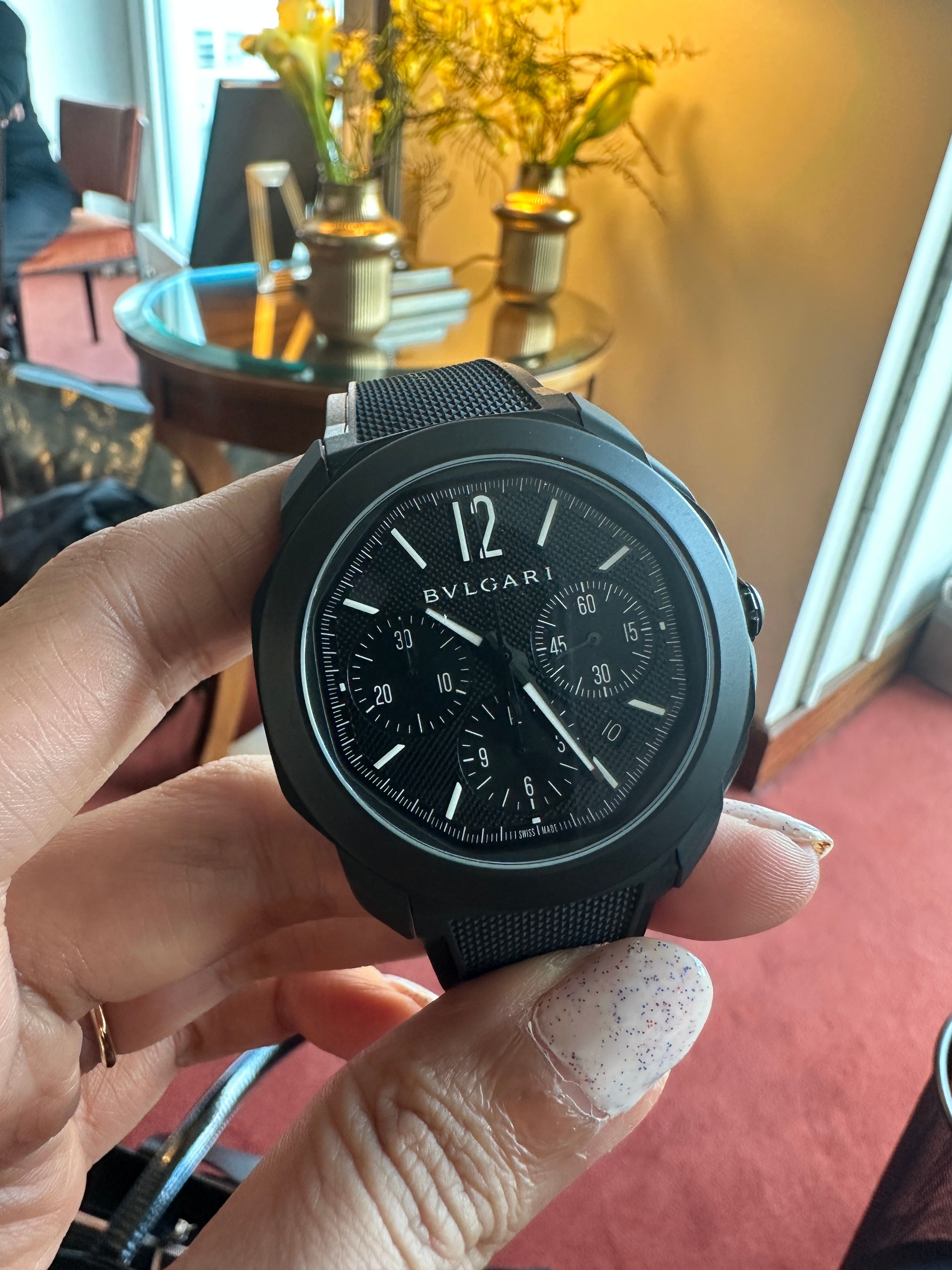
It's humbling to see where the ego stands - whether we forget who we are or accept to share the spotlight. We're talking about collective intelligence, but also collective creation, and that requires an appropriate mindset. You guide, but leave space for someone else to do the job, and that's okay. Finding that balance is key to these kinds of collaborations.
Ultimately, it's the pleasure of working together. If you have that pleasure and know why you're interested in the partnership, there's no problem. We love collaborating with Alejandro Aravena because he's an architect with a poetic perspective - very inspiring with his stunning yet simple vision of life. It works because he likes Fabrizio. With Max Busser, we just get along as friends.
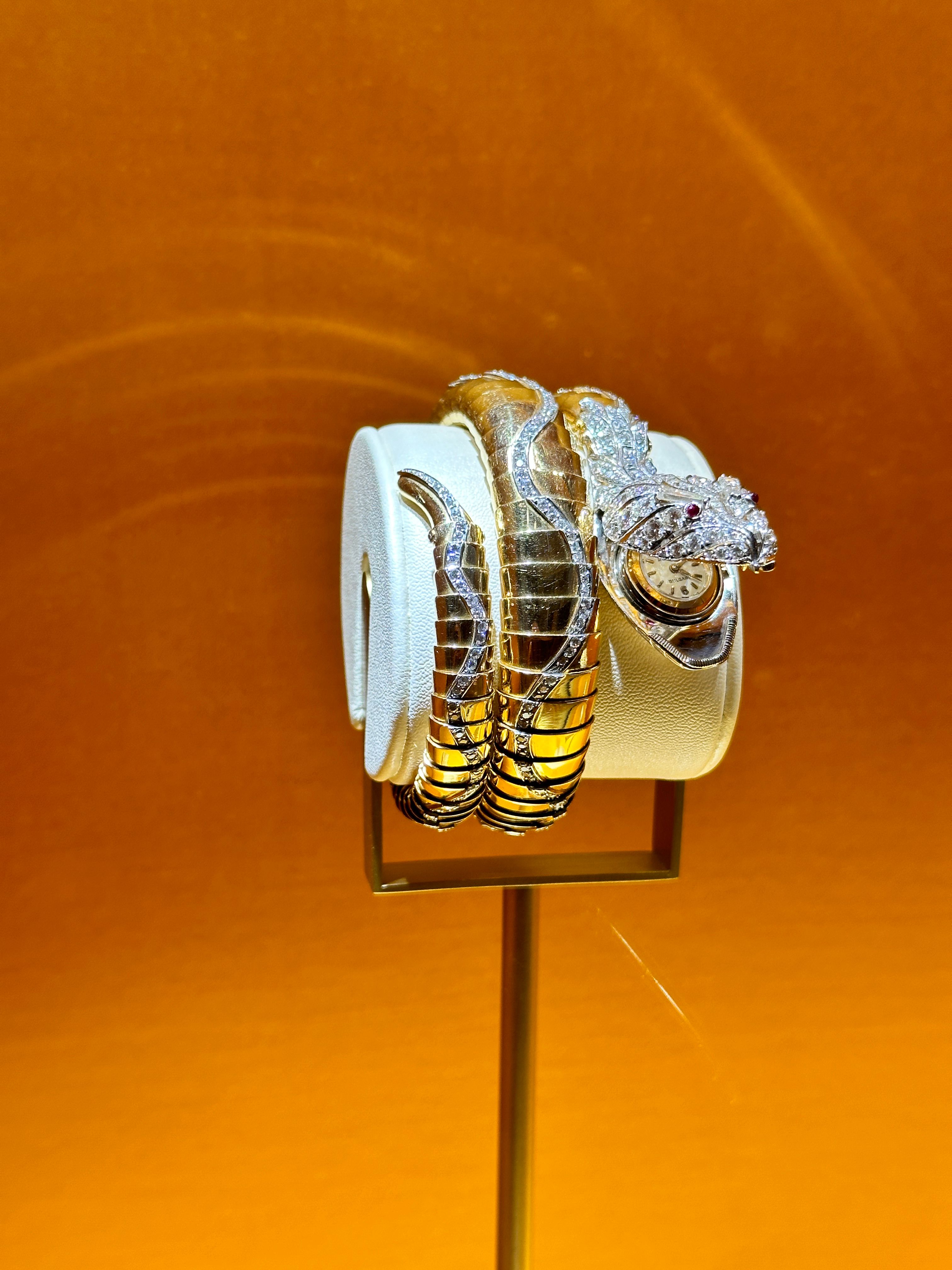
There will be more artistic collaborations, including one towards the end of this year with an artist on a very complex product, but it's been a nice relationship. It all comes down to that connection - you either have it or you don't. And when you do have it with really creative people, things can get quite crazy. I know what we're working on - some very strange stuff. But I love how it changes your perspective. We dare to do things we wouldn't dare on our own.
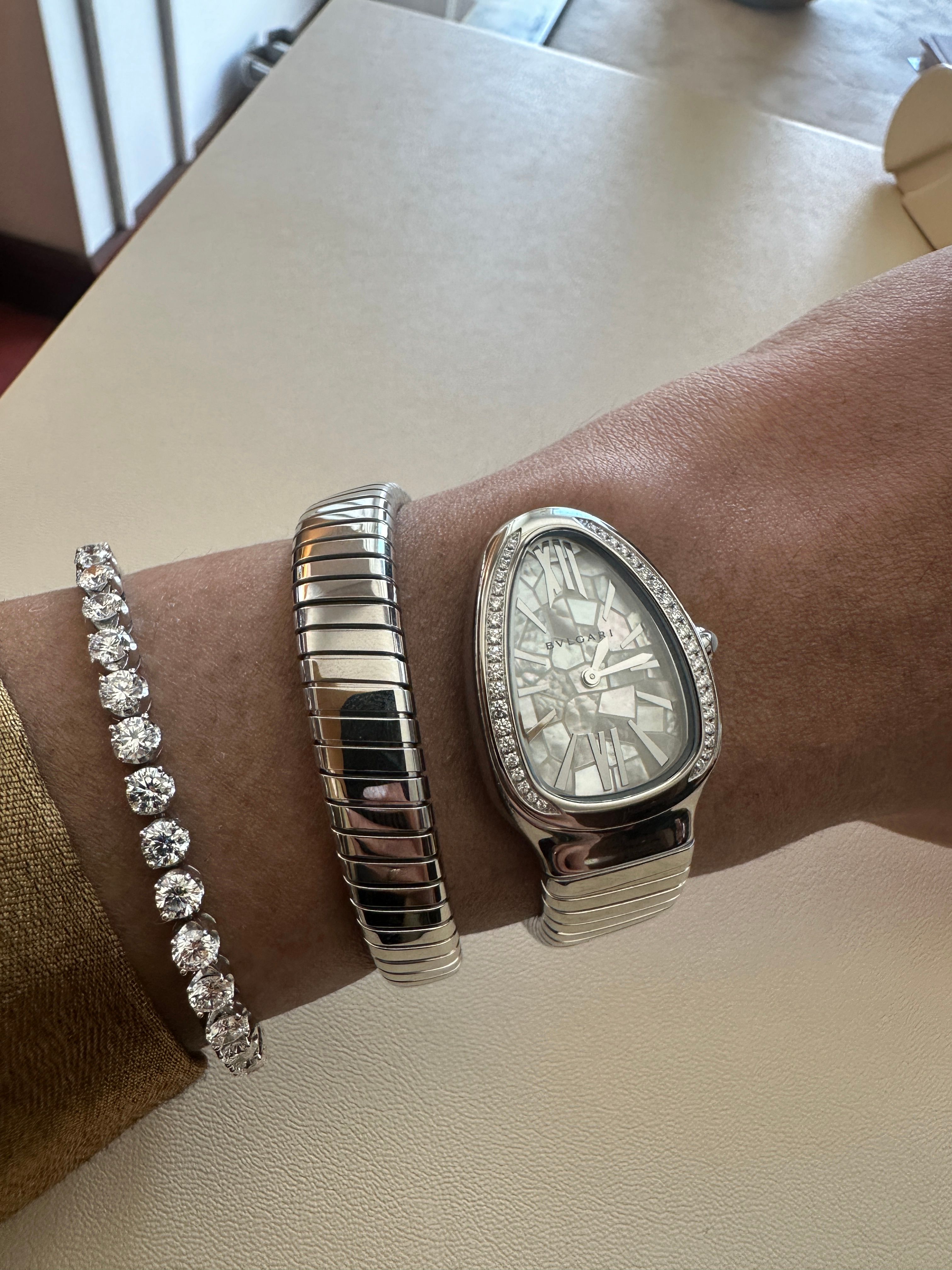
These collaborations help push us. Alone, we may not dare certain things due to brand constraints. But with an artist, we can afford to push boundaries further. They're bolder than us, opening gates we wouldn't dare open ourselves. They're like scouts taking us out of our comfort zone, which is exciting. I'm looking forward to seeing the results of this upcoming collaboration.
THM: Lastly, what in your opinion can be labelled as an icon and if you had to call something from Bulgari’s collection as an icon what would it be?
Antoine: Let me start by analyzing what makes an "icon" rationally and irrationally. An icon is an image that you adore, but you don't actually adore the image itself - you adore what it represents. With religious icons, you revere the Virgin Mary or Christ, not the physical piece, which is sacred for its representation. The iconoclasts broke icons, making you question where we stand - is it beyond the product itself?
To be an icon, a product likely needs a real soul that exists on its own and survives because its soul is somewhat immortal. Practically, you become iconic when the initial purpose of the product crosses the limits of its natural territory. In watchmaking, I see two limits - gender and generation. Traditionally, small watches are for ladies, larger for men. An iconic watch transcends those boundaries to be considered by all populations regardless of gender or age.
We may have a chance at an iconic piece hearing comments like men wanting a Serpenti, or women desiring an Octo Finissimo. We're crossing those gender borders. However, being only 10-12 years old, we're not quite iconic yet. If any of our pieces could claim icon status, the 75-year-old Serpenti line has the best case for being truly timeless. But I believe any product with a strong enough soul can potentially become an enduring icon overtime.
No articles found





